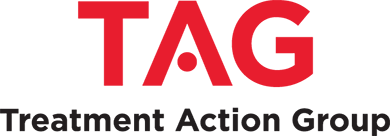More Than Just Markers
“… no longer solely of interest to academic immunologists …”
At the recent International AIDS Society conference in Sydney, Mike Lederman reminded attendees that abnormally high levels of immune activation were described in the first case reports of gay men with AIDS in 1981. The authors of those reports, led by Michael Gottlieb, specifically noted the “increased percentage of cells bearing the thymocyte-associated antigen T10.” This antigen is now known as CD38, and an extensive literature—particularly the work of the late Janis Giorgi, an immunologist at UCLA—demonstrates that CD38 expression on CD8 T cells correlates strongly with the rate of disease progression in people with HIV infection (in many instances, more strongly than viral load and peripheral blood CD4 T cell counts). It has also become clear that immune activation is a broader phenomenon than just CD38 expression on CD8 T cells. CD4 T cells are also over-activated and additional T cell activation markers—such as HLA-DR—are elevated along with levels of pro-inflammatory cytokines including TNF-alpha, IL-6 and IL-1beta.
The role of immune activation in HIV infection has generally received less attention than HIV-associated immune deficiency. But recently, immune activation has received renewed attention for a number of important reasons:
- Immune activation—but not viral load—has emerged as the critical factor distinguishing pathogenic immunodeficiency virus infections—such as HIV infection in humans and SIV infection in rhesus macaques—from nonpathogenic infections, such as SIV infection in sooty mangabeys and African green monkeys.
- Results from the large SMART trial, which evaluated the strategy of interrupting ART in a large population of more than 5,000 HIV-infected individuals, clearly showed that the relative risk of clinical events not normally considered to be AIDS-related was higher in people who interrupted therapy. Many of the events—such as cardiovascular, liver and kidney disease—are associated with inflammation and immune activation, and recent analyses of the SMART results are suggesting that levels of biological markers known to predict an increased risk of these events were raised by treatment interruption.
- The effectiveness of ART in restoring immune responses to opportunistic pathogens has greatly reduced the incidence of opportunistic infections, but even individuals on long-term ART with well-suppressed viral load typically show elevated levels of T cell activation compared to uninfected controls as well as markers of incomplete immune restoration (e.g., persistently skewed CD4/CD8 ratios). This suggests that these individuals may remain at increased risk for conditions associated with inflammation and/or perturbed T cell homeostasis (e.g. the cardiovascular events mentioned above and autoimmune-like phenomena).
- Studies have demonstrated variations in background levels of immune activation based on geographical location and an impact of immune activation on susceptibility to HIV infection; these results suggest immune activation also contributes to geographic variability in HIV transmission risk and the speed of progression from HIV infection to AIDS.
Taken together, these findings argue strongly for a renewed focus on unraveling the causes and consequences of immune activation and inflammation in HIV infection. The intimate correlation between viral load levels and immune activation markers and the precipitous decline in activation that occurs on ART are compelling evidence that HIV is driving the phenomenon. But exactly how this is occurring—particularly the extent to which HIV antigens are involved versus other potential sources of activation such as bacteria leaking across the gut mucosa—remains unresolved. Even the exact types of CD4 and CD8 T cell that are expressing high levels of CD38 in HIV is still uncertain; are they naïve T cells that have been activated, memory T cells that have been activated, or some mix of both? What antigens are these T cells specific for?
These questions are no longer solely of interest to academic immunologists, they are now increasingly recognized to have a vital relation to the transmission and pathogenesis of HIV infection and AIDS. Obtaining answers will require a multipronged approach involving studies addressing clinical questions—such as the best time to start ART—and translational research to evaluate therapies that might both ameliorate immune activation and shed light on its causes, such as toll-like receptor antagonists, CCR5 inhibitors and anti-inflammatory approaches. HIV research has come a long way in addressing immune deficiency; it’s now time to take on immune activation.
